Maybe it’s the intimacy of watching a distant bird up close through binoculars. Perhaps it’s the satisfaction of identifying a new flower on your own. It could be the fascination of examining a tiny invertebrate that came from an alien world of soil. It might even be coming face-to-face with the cackle of a Canada goose. To a student on a path to discover nature, these experiences are worth a thousand textbooks.
There’s a lot of talk about win-win scenarios. One program that truly embodies the win-win scenario is the Missouri Department of Conservation’s Discover Nature Schools program (DNS). In fact, it could be said that Discover Nature Schools is a triple win — a win for teachers, a win for their students, and ultimately a win for Missouri’s fish, forest, and wildlife resources.
Recognizing that kids of today are the conservationists of tomorrow, the Department has always made it a priority to furnish schools with quality educational materials. Starting in 2006, the Department made a concerted effort to take things to the next level. The new goal was to develop a set of educational units that featured ageappropriate content from preschool through high school.
Beyond simply teaching conservation content, these units would also be relevant in science education, aligning with the most current standards set forth by the Missouri Department of Elementary and Secondary Education, which most schools are required to follow. In addition, these units had to adhere to best educational practices and be captivating and engaging for students. Finally, they had to connect specifically with Missouri students. The result was the Discover Nature Schools program.
“It’s one of the few instructional units available that provides teachers with the tools necessary to help kids learn about Missouri plants and animals,” said Kevin Lohraff, the Department’s Education Programs/Curriculum Supervisor. “It focuses on what’s happening right outside their door.”
DNS is broken down into five progressive instructional units covering grades Pre-Kindergarten–12. Complete instructional materials are made available to teachers through the program. These include comprehensive teacher guides, full-color student books, and science notebooks. In-person training is also offered for teachers using DNS units by way of the Department’s education consultants. All units are free to participating schools, and DNS grants pay for exploration equipment used to teach the units and transportation costs for field investigations.
DNS is founded on place-based and experiential learning. An integral part of each unit is taking the students outdoors to encourage their own explorations of nature. “Learning outdoors is one of the fundamental philosophies of DNS,” Lohraff said. “It uses hands-on and inquiry-based learning, which helps develop higher-order thinking skills.”
DNS offers teachers high-quality educational units that fit the science objectives they are required to teach, and at no cost to the schools.
Take Home Lessons
“I was really excited about the DNS program when I first heard about it because it took what I used to do and all my personal interests, and let me do that in the classroom,” said Heidi Qwentus. “And if kids can see that as a teacher you’re really interested in something, it’s just going to make them more interested.”
Qwentus is a fourth-grade teacher at Forder Elementary School, which is in St. Louis County’s Mehlville School District. She adopted the DNS Nature Unleashed unit, and has been teaching from it for four years.
“Kids are really in tune with how you feel about what you’re teaching. They know the outdoors is part of who I am,” she said.
The fact that DNS teaches kids about what’s in their own backyards is one of the things that drew her to the program.
“It’s not until something is personal that kids start to care about what they’re learning, like when they can identify different organisms because they’ve seen them and know they’re in the area,” said Qwentus.
Her classes are usually broken up into tables of four, and students conduct small group discussions and activities with partners. She has the students pick an organism that looks interesting to them. Then the students go outside for field experiences. Once there, students observe how the chosen organism interacts with its environment, recording it all in their DNS student books. They translate what they’ve learned in the classroom to what they see in the real world.
“The DNS field guides give kids the opportunity to investigate themselves and learn about things that are right in front of them,” she said. “The science notebook gives kids enough freedom, and they’re not restricted by fill-in-the-blanks, quizzes, and worksheets.”
With its emphasis on outdoor learning, Qwentus also appreciates that DNS offers reimbursement for transportation costs to take students to an outdoor destination like a conservation area. She takes her students to the Department’s Claire Gempp Davidson Memorial Wildlife Area in nearby Sunset Hills. This 13-acre area demonstrates all three habitats covered in the Nature Unleashed unit - forests, prairies, and ponds. - She sees these field investigations as teaching kids about what’s in their own backyards.
“When they really get to focus with a magnifying glass and look at an ant or something, it’s really cool to see them block everything else and just focus on that bug,” said Qwentus. “And the kids you might not peg as outdoor kids are just completely absorbed in that tiny thing in front of them.”
Qwentus said she felt the training she received from Department Education Consultant David Bruns was invaluable. She said that teachers new to the program shouldn’t be intimidated about learning how to teach it.
“I got to go on the field experience myself with David and got to be the student,” she said. “There are not a lot of times we get that opportunity as teachers. Having the tables flipped really helps us teach it better because we get to see through our students’ eyes.”
Qwentus gives her students tests on the material both before and after teaching a Nature Unleashed unit. Pretest scores average about 51 percent, while post-test scores average 84 percent. She said the results are consistent from year to year.
Perhaps the biggest testimony comes from the students themselves.
“Kids are excited to be able to take the Nature Unleashed student guide home at the end of the unit,” said Qwentus. “It’s neat that they want to keep something.”
What We’ve Wanted for Years
One of the things Spencer Storey saw lacking in elementary education was science. Like Qwentus, Storey is a teacher using the DNS Nature Unleashed unit. He teaches fourth grade at Hancock Place Elementary in the Hancock Place School District of St. Louis County. This past year was Storey’s first year with DNS.
Storey had talked for years with a friend and colleague about putting a program together that would get kids outside. That same friend, who now teaches the DNS eighth-grade unit, introduced Storey to the program. “This program has really been a chance to incorporate more science, and get the kids excited about it because we get to go outside and actually explore things,” said Storey. “It makes them want to grasp the information more.” Despite a high-quality curriculum, Storey admits it might have been a hard sell to his principal were it not for
the Department’s financial support for the program, which includes grants to cover costs for the equipment needed.
“That was one of the big selling factors. If I had to pay for this myself, I wouldn’t be able to do it,” he said. The DNS unit focuses on plants and animals found in his students’ home state, which impresses Storey. These are the plants and animals they will likely see when camping, on a trip to the lake, or maybe in their own backyard.
“The most powerful example is identifying poison ivy,” Storey said. “We went really in-depth as to what it looks like, beyond the old ‘leaves of three’ saying. We talked about other characteristics like the red vines. One of our activities when we got outside was identifying it. It was immediate — they knew what it was right away.”
While plants and animals naturally fascinate kids, there can be a certain amount of fear of the outdoors for those kids who are new to these experiences. He’s seen the Nature Unleashed unit transform fear into curiosity.
“Instead of being afraid of an animal or wanting to kill an insect, the kids have learned to ask, ‘What kind of bug is it? What can we learn about it? What does it eat?’ That was an interesting switch I saw when we started doing this program,” said Storey.
In fact, Storey said his students now often want to keep insects they find during their outdoor explorations. However, Storey takes the opportunity to reinforce the food chain lessons of the Nature Unleashed unit.
“If we take it away, are we disrupting the food chain and taking a meal away from another animal?” he asks. “That makes a connection for them, and they begin to want to put everything back into the exact same spot they found it to conserve what they found.” Storey said he is fortunate to be able to conduct some of the outdoor investigations on the school grounds. However, he also appreciates the opportunity the Department provides to get his students to the Gempp Davidson Conservation Area.
“We do a lot of outdoor activities at our school but could only do so much,” said Storey. “We don’t have a pond, for example. We talked about pond animals, so as soon as we got out there, that was one of the spots they enjoyed the most because we just didn’t get to see it before.”
He said once they started taking water temperatures and seeing the animals around the pond, it was a totally different atmosphere from being at school.
Storey said he gives students assignments, like finding an interesting leaf and sketching it in their DNS science notebooks. He then allows them the freedom to complete the assignment on their own time. It lowers barriers and gives them the independence to customize their own experience. “They take more ownership of it,” he said. Like Qwentus, Storey has also taken advantage of Education Consultant David Bruns’ assistance in getting up to speed with DNS.
“David was great with this. He comes along for the first trip, letting me know he’s here to help out, but I’m the one in charge,” said Storey. “It was great to have him there to answer questions and such.”
Storey praises the DNS materials, too. He pointed out that his kids love the student books because of their glossy, color pages. “The illustrations and color catch them right away,” he said.
He said students get especially excited about the ID illustrations for each of the three habitats the unit covers. They enjoy finding the plants and animals in the illustration and identifying them with the key off to the side.
“It’s like a game for them,” said Storey. “This is exactly the kind of program my friend and I have been wanting for years!”
Stewards of Tomorrow
One of the biggest goals of DNS is to help kids move through a “stewardship model.” That model takes students from an initial interest and curiosity, all the way through to acting and behaving on behalf of conservation for the long term.
“In the end, we want them to not only see that our actions make a difference, but to take those actions on their own to promote healthy and sustainable fish, forests, and wildlife and the ecosystems they depend on,” said Lohraff. It’s the triple win that will create the conservationists of tomorrow.
Discover Nature Schools by the Numbers
Discover Nature Schools is built on five educational units, each consisting of age-appropriate content and aligned with the state Grade and Course Level Expectations. They include, by grade level:
- Preschool: Nature Revealed
- K–2: Nature Unfolds
- 3–5: Nature Unleashed
- 6–8: Conserving Missouri’s Aquatic Ecosystem
- 9–12: Nature Unbound
DNS is also available for homeschool groups.
The program is now used in 100 percent of Missouri school districts and in 1,627 public and private schools. This accounts for 53 percent of the total number of schools in Missouri.
DNS reaches over 75,000 students per year, and nearly 400,000 students have gone through the program since its inception in 2006. The Department’s education consultants make DNS happen onthe local level. They continually provide workshops and support forteachers in the DNS “train the trainer” model. For more information on DNS, including grants available for transportation and field experiences, workshops, and sample units, visit short.mdc.mo.gov/ZZ4. For local contact information, visit short.mdc.mo.gov/Z44.
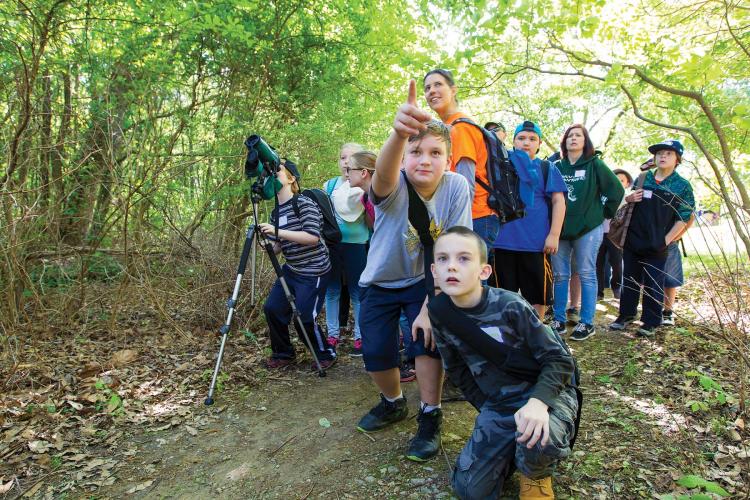

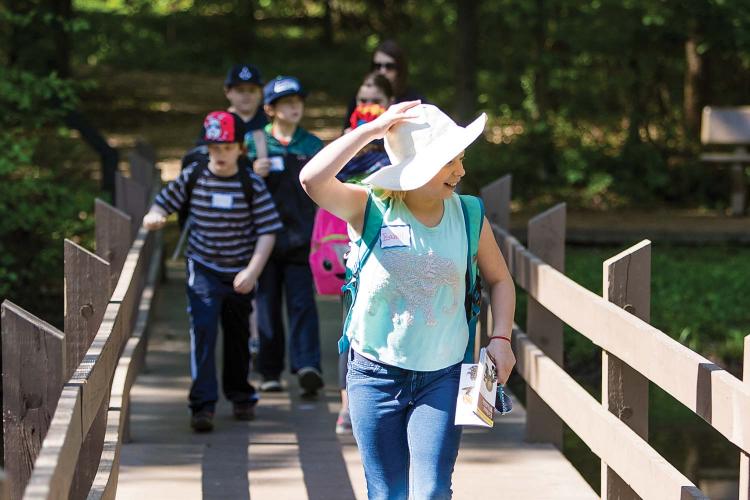
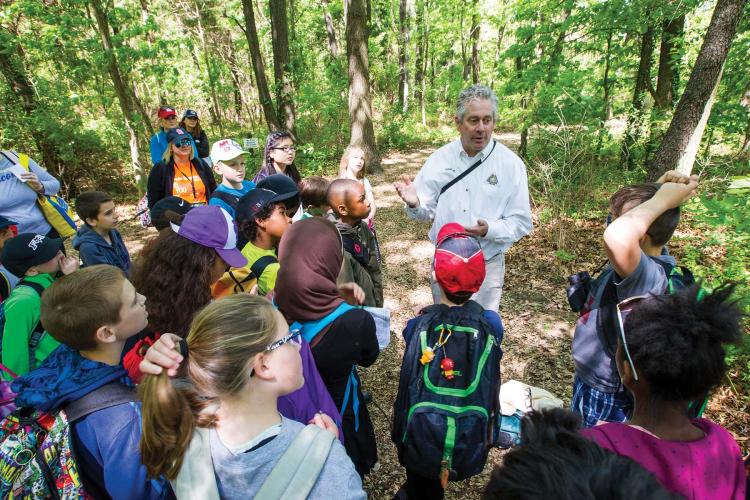
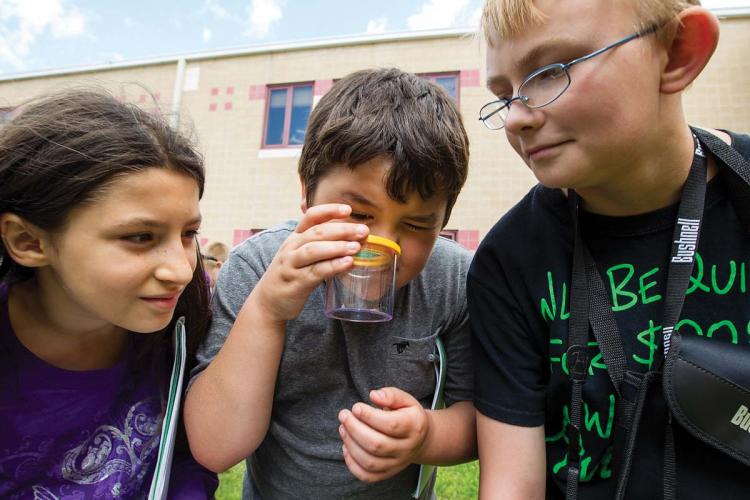
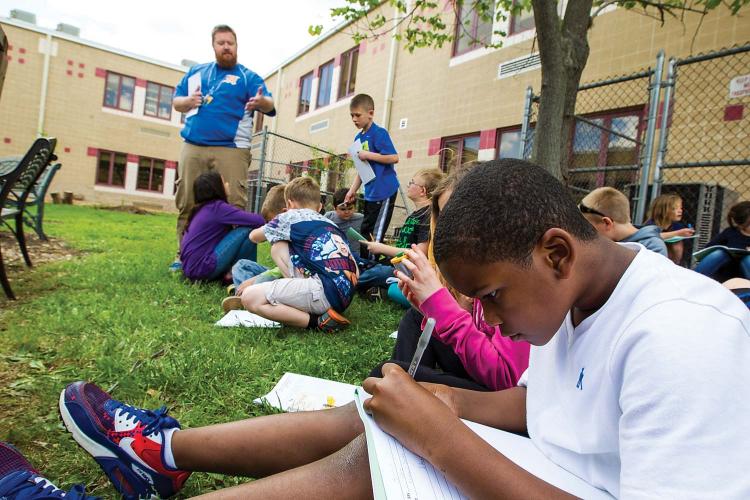


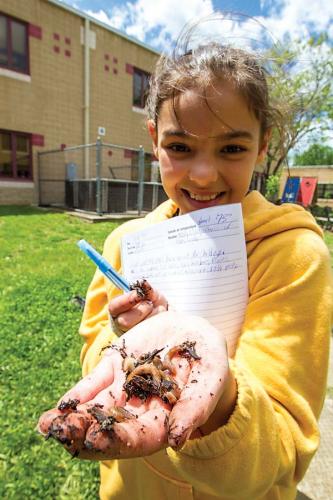
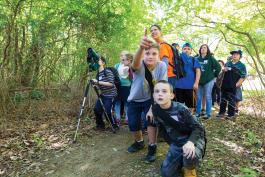


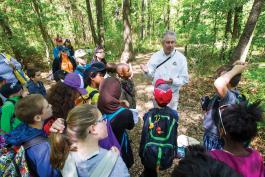
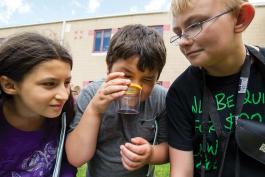
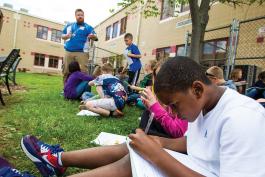
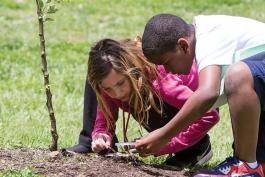

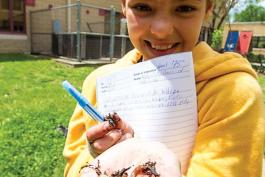
Also In This Issue


And More...
This Issue's Staff
Art Director - Cliff White
Associate Editor - Bonnie Chasteen
Staff Writer - Heather Feeler
Staff Writer - Kristie Hilgedick
Staff Writer - Joe Jerek
Photographer - Noppadol Paothong
Photographer - David Stonner
Designer - Les Fortenberry
Designer - Marci Porter
Designer - Stephanie Thurber
Circulation - Laura Scheuler






















